Wondering how to drive an RV? You’re not alone. Driving such a large vehicle can be intimidating, especially if you’ve never driven something large before. You may be wondering, “Is it hard to drive an RV?” Fortunately, the answer is no—driving RV motorhomes and trailers is totally doable, even for the most nervous of drivers.
The trick to driving an RV? Remembering a few simple rules.
In this article, we are going to discuss the ins and outs of RV driving so you can hit the road with complete confidence in your abilities as an RV driver.
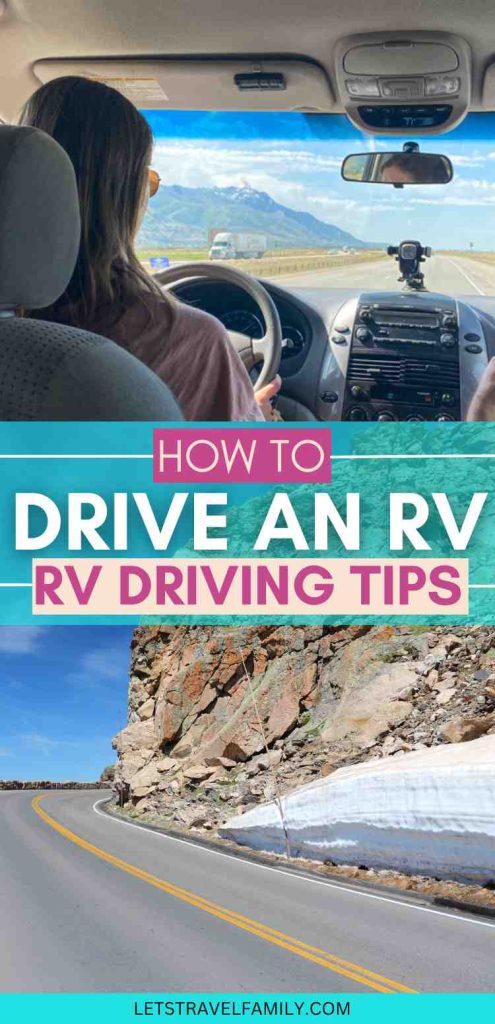
THIS ARTICLE MAY CONTAIN COMPENSATED LINKS. PLEASE READ OUR DISCLAIMER FOR MORE INFO. THIS POST WAS WRITTEN BY JILL GREISING-MURSCHEL, A FAMILY TRAVEL AND RV LIVING EXPERT.
Where to Begin – RV Driving School?
How hard is it to drive an RV? Honestly, the difficulty of this task depends entirely on the driving skills you already have as an RV owner and your confidence in those skills. If you don’t feel your driving skills are up to par, you might consider going to an RV driving school to grow your confidence behind the steering wheel. A great remote resource is this online RV driving lessons when learning to drive a motorhome or tow a trailer.
All that said, in most cases, it is totally possible to drive your RV without RV-specific driving lessons. The tips below will help get you safely driving on the road in your rig.
How to Drive an RV: Getting Ready
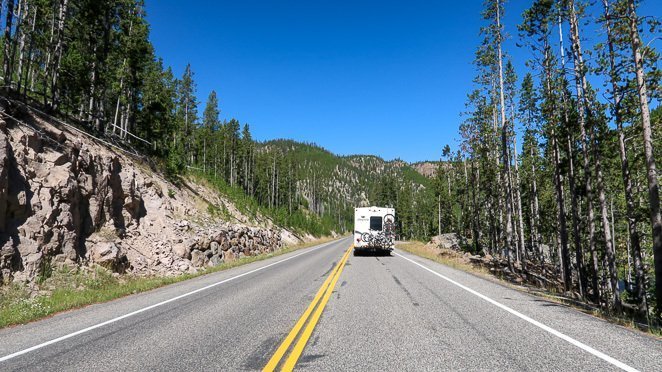
Before you get out on the open road, there are a few things you should do to prepare for driving camper trailers and motorhomes. These are the things all RV drivers should do immediately after buying an RV and before heading out on their first trip in order to ensure they are driving as safely as possible.
Invest in Insurance
The very first thing you should do after buying an RV is to buy insurance. In most cases, it is best to grab a full coverage policy, and if you’ll be living in the RV full time, you will want full timer’s RV insurance.
Plan to rent the RV? If so, you definitely want to look into insuring your rig through Roamly.
Practice in a Parking Lot
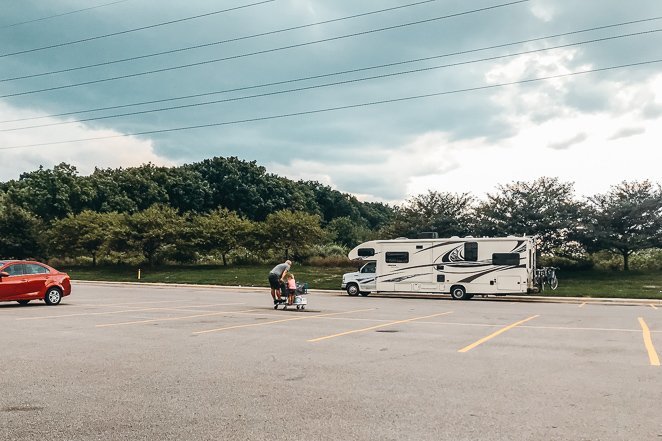
Now that your motorhome or trailer is insured, the next thing you’ll need to do is get some practice in. We recommend doing this in a parking lot first, making sure to practice turning, stopping, and backing up so you get a feel for how the rig drives. Once you’re comfortable in a parking lot, head out onto some city streets, but be sure there are no low clearance bridges or overly tight turns along your route!
Install a Backup Camera
We highly recommend installing a backup camera on your RV. It’s one of the RV gadgets you may want to consider investing in.
Not only will this help you see everything around you when backing up, but it’ll also allow you to see behind you while driving down the highway. This can be very helpful when it comes to defensive driving.
Know Your Limits
Every truck, trailer, and motorhome has certain limits to keep in mind. These include a cargo carrying capacity, a towing capacity, and many other such capacities and limits. It’s very important that you fully understand these limits and never exceed them. You will need to carefully match the trailer you choose to the truck you have (or vice versa) and/or be careful not to overload your motorhome. Doing so can be extremely dangerous, especially if you ever plan to drive your RV in Mexico or down any dirt roads or poorly paved roads.
Pack and Load Wisely
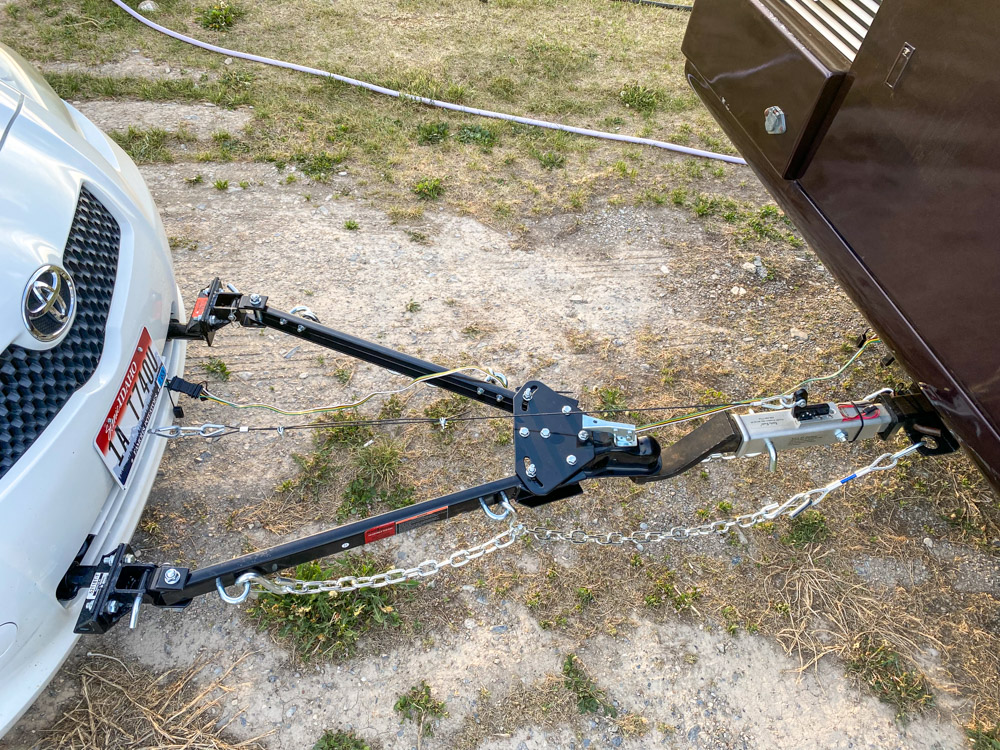
Unfortunately, simply knowing how much weight you can pack isn’t enough. You also have to be sure you balance your load correctly. Too much weight on the front, back, or one side of your rig can lead to wagging, swaying, and other issues that might cause you to lose control of the RV. The goal is to balance things as much as possible and pack heavy items down low and close to the axles.
Create Routes Carefully
You might have had a lot of parking lot practice, but all the practice in the world doesn’t help much when you find yourself driving under a low-clearance bridge or on a 10% grade. Therefore, you will want to avoid these situations by carefully planning your routes. RV Trip Wizard is a great tool for this, but you can also use a Trucker’s Atlas to get the same job done.
Plan for Passengers
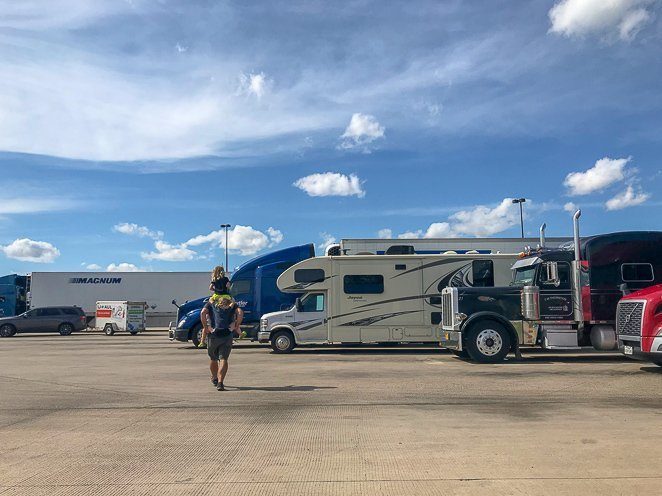
Can you be in a camper while driving? The answer to this common question is a hard “no” if the camper in question is a fifth wheel or travel trailer. That said, if you’re driving a motorhome, passengers can ride inside while driving. Of course, those passengers should be seated and buckled up while the rig is in motion. If you plan on taking friends or family members camping with you, be sure to think about where they will ride.
Carry Roadside Assistance
Lastly, we highly recommend carrying RV-specific roadside assistance while driving a motorhome or trailer. This will ensure someone is there to help if your RV (or tow vehicle) ever breaks down, gets a flat tire, or has a dead battery.
Tips for Driving a Motorhome or Trailer
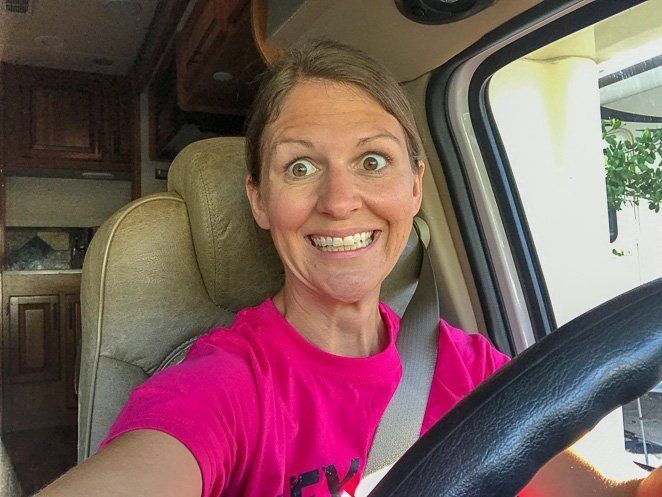
With the things listed above taken care of, you are ready for your first experience driving a motorhome to an actual destination. Even after some practice, knowing how to drive a motorhome in all situations can feel a bit daunting. Simply keep the tips below in mind and you should be good to go.
Know Your Size
One of the very first things to keep in mind when learning how to drive a class A RV or any other big rig? You always, always want to know your size. We’ve already mentioned low clearance bridges a couple of times. Coming up on one of those and not knowing your rig’s height in order to know if you will clear the bridge can be nerve-wracking, to say the least.
Bridges with weight limits can be equally stressful if you don’t know your rig’s weight. If you have to, make a sticker to put on the visor to remind yourself of the height and weight of your rig so you don’t find yourself trying to guess one or the other at the last second.
Make Wide Turns
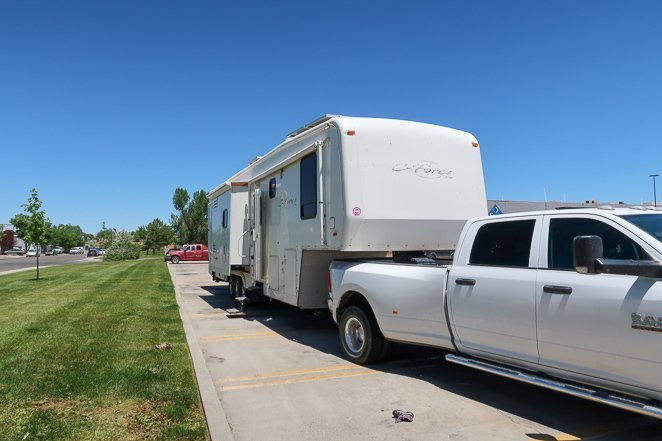
By now, you’ve practiced turning in a parking lot quite a few times. From this, you’ve probably gotten a decent idea of the turning radius of your RV. That said, it can be easy to forget just how wide those turns have to be when in real-world situations. Keep reminding yourself to make wide turns throughout your drive, especially when you stop to get gas and pull into the campground.
Leave Room for Sudden Stops
At this point, you probably also know just how hard it can be to stop a big rig suddenly. For this reason, you will want to make sure to leave an enormous amount of space between yourself and the vehicle in front of you. It’s also important to anticipate sudden stops as much as possible and expect that people will cut you off.
Always Have a Spotter
Yes, you have a backup camera, but these cameras don’t always catch everything. For you and your RV safety, always, always have someone spot you when backing up or making a tight turn. Using walkie-talkies or your phones to communicate can be helpful.
Take It Slow
If you’re driving long distances in your RV, it can be tempting to put the pedal to the metal. Don’t do this. Slowing down is the best and easiest way to avoid making big mistakes. Try to plan shorter travel days so that going slow isn’t an issue, and then take it easy and enjoy the ride.
Pull Over Often
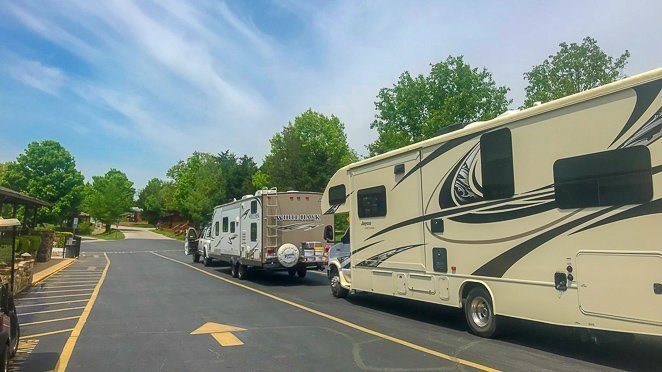
This next one goes hand in hand with driving slowly: Pull over often. Don’t push yourself to drive for hours at a time, and never drive when you’re drowsy. Instead, take regular breaks to stretch and wake your brain up. You can even make stops to check out attractions along the way.
Be Weather Aware
Finally, you will definitely want to be weather aware when driving your RV. If the weather will be especially windy, snowy, rainy, or otherwise unpleasant, consider postponing your travel day and staying put for an extra day. Wind tends to blow RVs all over the road and has even been known to turn big rigs over. Meanwhile, snow, rain, and ice make for poor visibility and slick roads.
So, are motorhomes hard to drive? With a healthy bit of practice and awareness, it doesn’t have to feel overly difficult. Can you tackle the task of pulling a fifth wheel down the road? The answer to that one is a resounding “yes”!
By using the tips above, you will be able to pull any trailer or drive a large RV safely so you and your family can arrive at your camping destination safe, sound, and ready to enjoy your trip!
